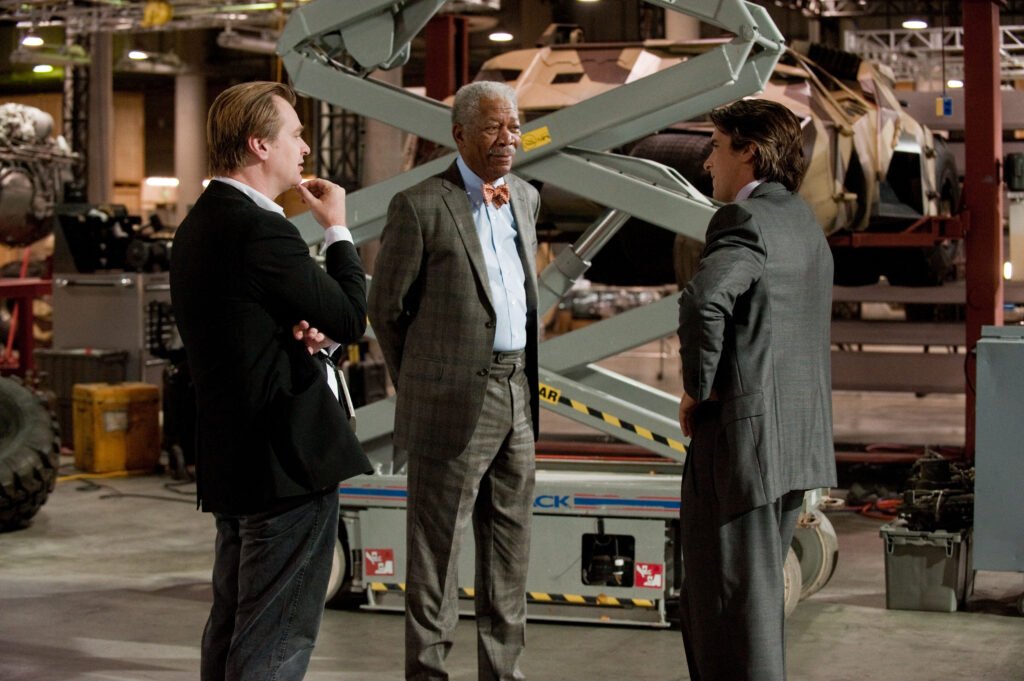Entertainment
Why Do Christopher Nolan Movies Feel Different?
Christopher Nolan stands as one of the most celebrated and distinctive filmmakers of the 21st century. In an industry dominated by sequels, remakes, and franchise entries, Nolan consistently charts his own course, earning admiration, perplexity, and above all, a sense of wonder from audiences worldwide.

An Outlier in the Blockbuster Era
While most major studios bank on established intellectual properties, Nolan operates as a remarkable outlier, crafting original narratives that explore complex philosophical concepts and intricate storytelling. From his humble beginnings—his first film created with a mere $6,000 budget, lamp lights, and the support of friends and family—Nolan transformed resource limitations into stylistic foundations that define his cinema today.
Signature Motifs and Themes
A hallmark of Nolan’s work is his use of motifs—visual, conceptual, and sonic. He weaves repeated patterns into his films to support their central themes:
- Inception: Totems serve as symbols of blurred realities.
- Interstellar: The concept of time becomes the film’s emotional and narrative core, representing distance, resource, and existential reckoning.
- Insomnia: Bright windows symbolize guilt and eroding mental states.
Nolan’s obsession with time—as both theme and structural device—sets him apart from his contemporaries. In “Dunkirk,” he masterfully tells the same event from three overlapping timeframes, showing how perspectives shift with new information, enriching the audience’s experience each time a moment is revisited.
Visual Storytelling and Scale
Nolan’s films are renowned for their monumental sense of scale. His use of establishing shots is selective but impactful. Rather than simply setting a scene, he pulls back to reveal the vast magnitude of unfolding events. This approach heightens the emotional stakes and immerses viewers in the narrative.
Authenticity is a cornerstone of Nolan’s style:
- He’s unafraid to leave minor mistakes in the final cut, adding to the realism.
- Rejecting the highly stylized visuals of peers like Zack Snyder or the controlled symmetry of Wes Anderson, Nolan seeks “heightened naturalism,” creating immersion through a realistic lens.
- His blocking is straightforward and focused on moving the story forward, as seen in action sequences like those in “The Dark Knight.” He prefers efficiency over spectacle, contrasting with the elaborate long takes of other modern directors.
Crafting Atmosphere: Cinematic Techniques
- Collaborator Partnerships: Cinematographers Wally Pfister and Hoyte van Hoytema help manifest Nolan’s vision, marked by silhouettes, inserts, symmetry, repeated visual elements, and Kubrickian one-point perspectives.
- Technical Choices: Nolan is committed to shooting on film, utilizing real locations, and favoring practical effects over CGI. Even when visual effects are necessary, he carefully combines them with practical shots to maintain the illusion of reality.
Flaws and Criticisms
Nolan’s signature style is not without its critics:
- His intricate, puzzle-like plots can render his films opaque, sometimes sacrificing emotional clarity.
- There is heavy reliance on expository dialogue instead of natural character development, making motivations and relationships feel underdeveloped.
- Communication can be deliberately obstructed: characters speak through masks or overbearing sound design, occasionally frustrating viewers seeking straightforward storytelling.
- Dialogue may be muddled by sound mixing choices, leading to varying viewer experiences depending on the screening environment.
Lasting Impact and Industry Influence
Despite these contentious elements, Nolan’s impact reshapes modern cinema:
- His push for practical effects has inspired a new wave of productions to tout their “no-CGI” authenticity.
- The “Inception horn” sound design became a genre-defining audio cue, echoed in trailers across Hollywood.
- Nolan’s journey, from self-taught artist with no formal film education to helming massive studio movies, embodies the creative dream for aspiring filmmakers.
Cultural Resonance
Nolan’s films resonate deeply because they reflect contemporary anxieties and desires:
- They wrestle with themes like the inevitability of time, fragility of memory, and the lure of escaping reality.
- His elaborate aesthetics invite audiences to create personal meaning within the cinematic experience.
Conclusion
Ultimately, Christopher Nolan’s movies feel different because they operate at the intersection of innovation, intellect, and authenticity. Whether dazzling audiences with ingenious structures or provoking debate over their complexity, Nolan’s films spur viewers to think, feel, and dream—mirroring society’s search for meaning in an uncertain age.